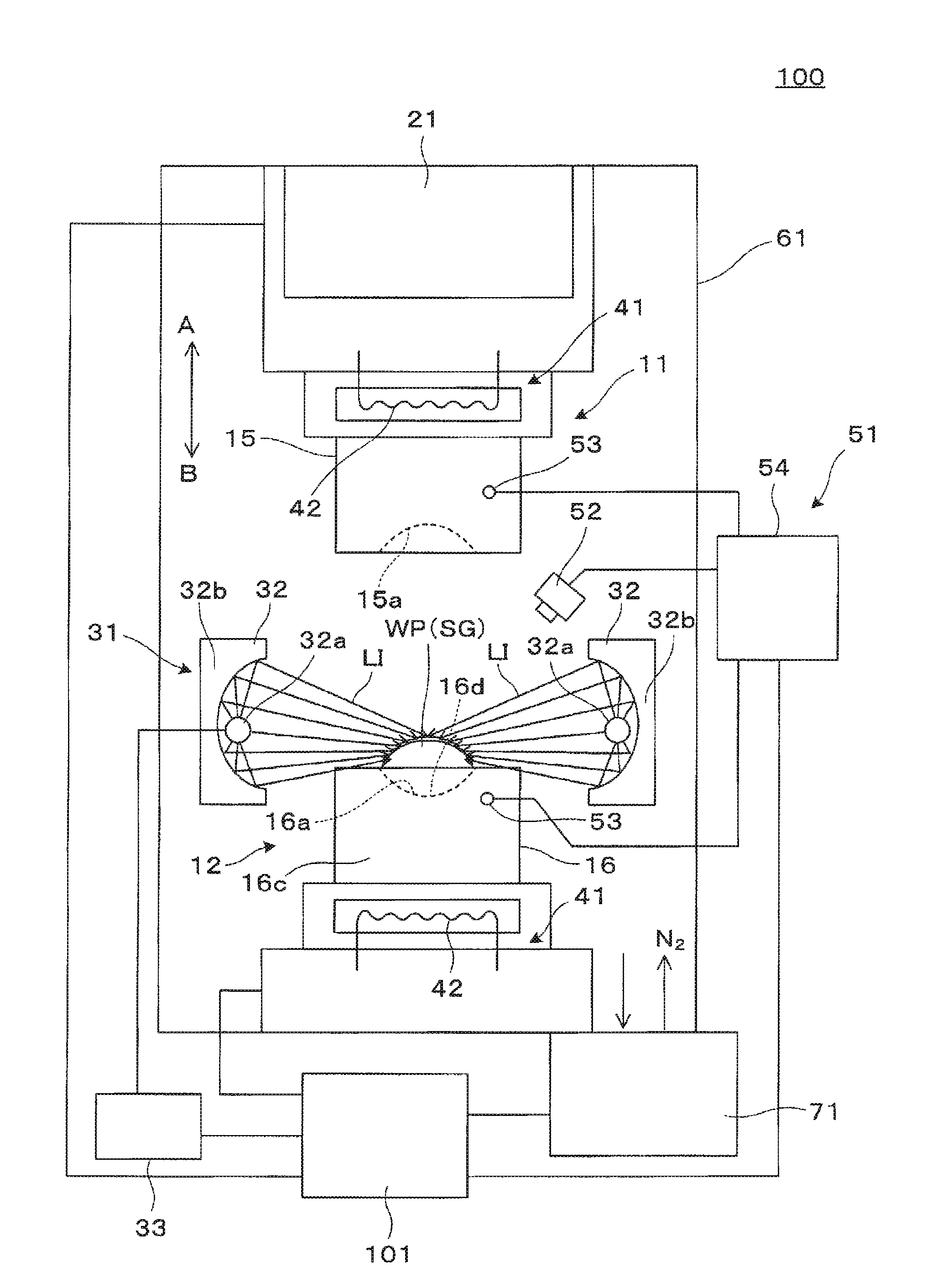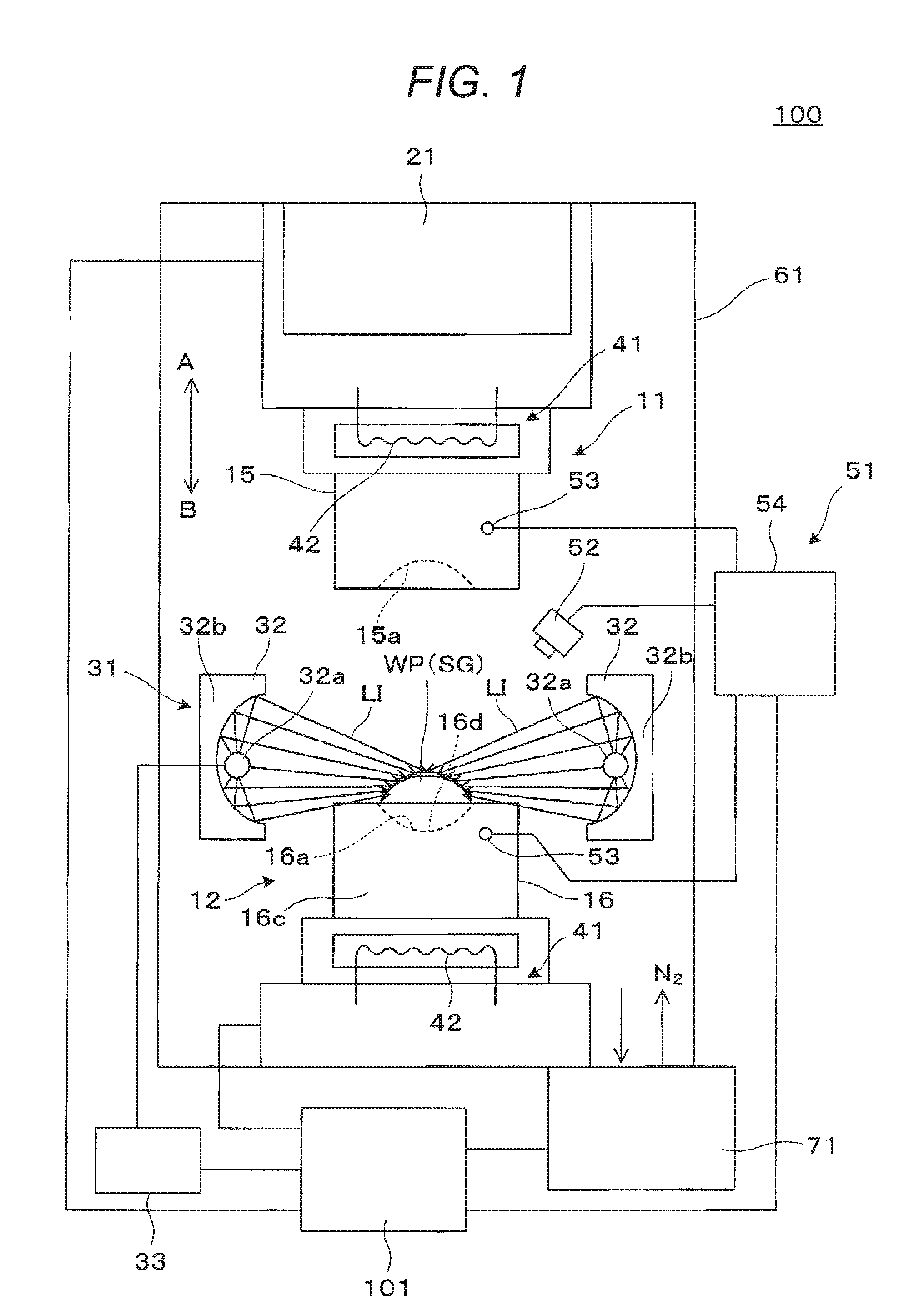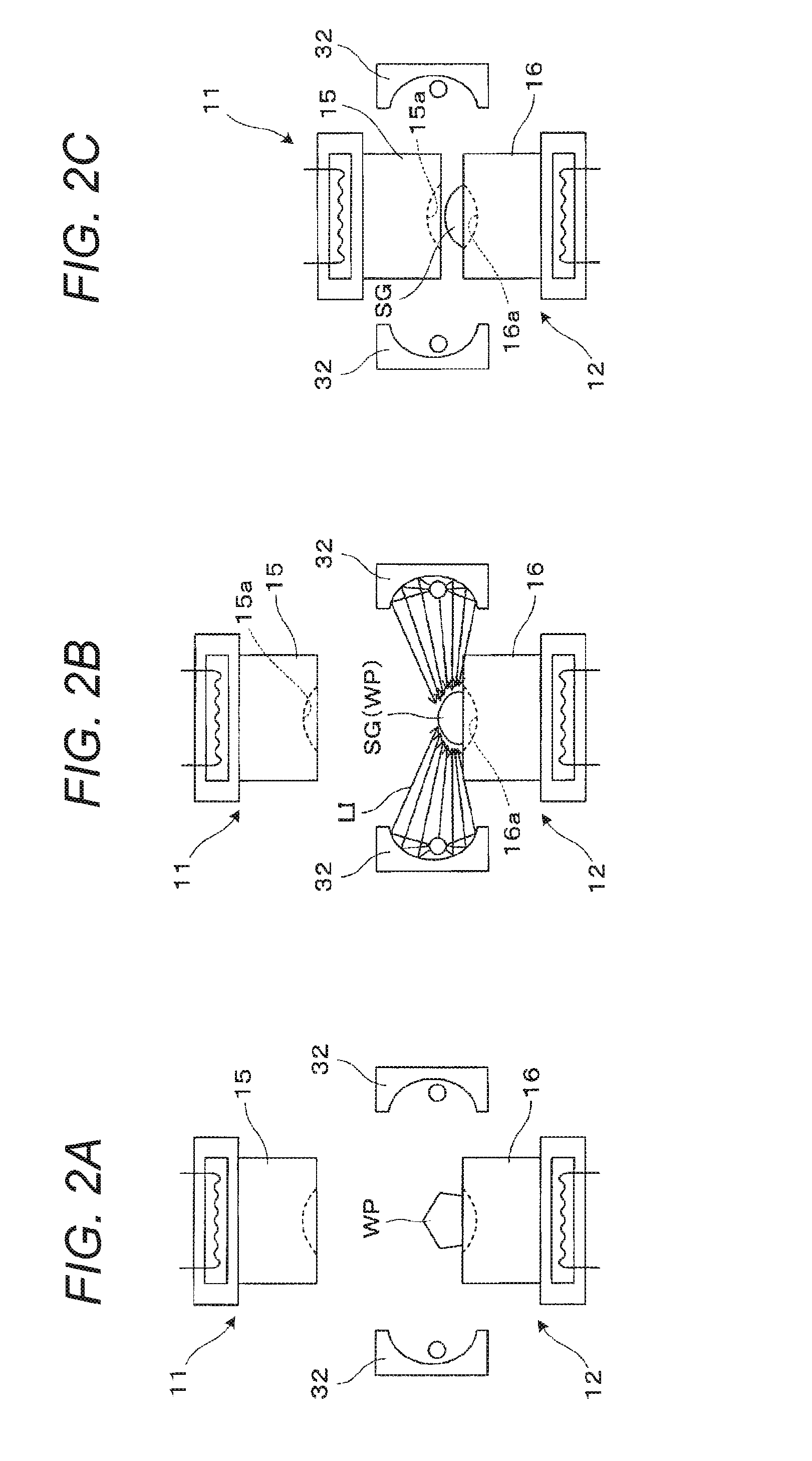Method for Producing Optical Element and Optical Element
a technology of applied in the field of producing optical elements and optical elements, can solve the problems of reducing the transmittance of optical elements, affecting the quality of optical elements, and requiring high transmittance of lenses, etc., and achieves the effect of high performance, inexpensive and efficien
- Summary
- Abstract
- Description
- Claims
- Application Information
AI Technical Summary
Benefits of technology
Problems solved by technology
Method used
Image
Examples
first embodiment
[0026]As illustrated in FIG. 1, a production device 100 for performing a production method according to a first embodiment includes a pair of upper and lower mold dies 11 and 12, a mold die driving unit 21 for the upper mold die 11, a first heating unit 31 for heating a work piece WP of chalcogenide glass mounted on the lower mold die 12, a second heating unit 41 for heating the mold dies 11 and 12, a temperature monitoring unit 51 for monitoring the temperature of the work piece WP on the mold die 12 or the like, a chamber 61 for accommodating the mold dies 11 and 12 or the like, an atmosphere adjustment unit 71 for adjusting the atmosphere in the chamber 61, and a main control unit 101 for controlling the units of the device.
[0027]The upper first mold die 11 includes a transfer member 15 provided with a transfer surface 15a. The work piece WP becomes a heated softened glass body SG as described below, and the transfer member 15 transfers a first optical surface to an upper side of...
second embodiment
[0045]Hereinafter, a production method according to a second embodiment will be described. The production method according to the second embodiment is obtained by partially modifying the production method according to the first embodiment. Matters not particularly described are similar to those in the production method according to the first embodiment.
[0046]A production device 100 illustrated in FIG. 5A includes a stage 81 for supporting a work piece WP and a driving unit 82 for moving the stage 81. The driving unit 82 can dispose the stage 81 at a position for delivering the work piece WP, a heating and softening position immediately below an infrared ray irradiation unit 32, and a transfer position for transferring the work piece WP to a second mold die 12. The one production device 100 can include a plurality of the stages 81, a plurality of the delivering positions, and a plurality of the heating and softening positions.
[0047]The stage 81 includes a flat plate-shaped support pl...
PUM
| Property | Measurement | Unit |
|---|---|---|
| Temperature | aaaaa | aaaaa |
| Temperature | aaaaa | aaaaa |
| Length | aaaaa | aaaaa |
Abstract
Description
Claims
Application Information
 Login to View More
Login to View More - R&D
- Intellectual Property
- Life Sciences
- Materials
- Tech Scout
- Unparalleled Data Quality
- Higher Quality Content
- 60% Fewer Hallucinations
Browse by: Latest US Patents, China's latest patents, Technical Efficacy Thesaurus, Application Domain, Technology Topic, Popular Technical Reports.
© 2025 PatSnap. All rights reserved.Legal|Privacy policy|Modern Slavery Act Transparency Statement|Sitemap|About US| Contact US: help@patsnap.com



